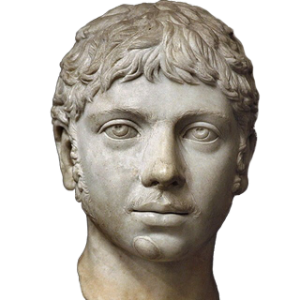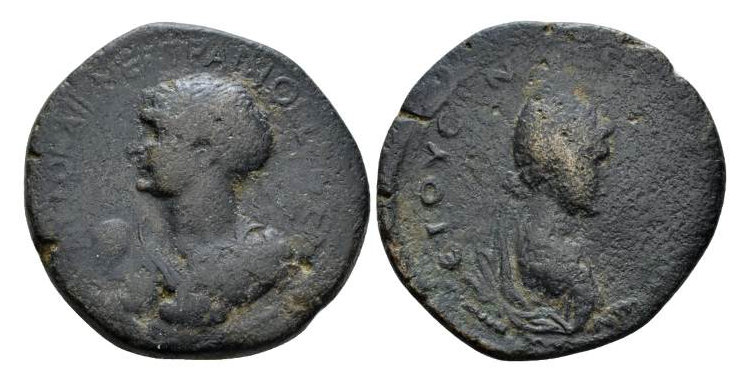
Elagabalus
Marcus Aurelius Antoninus
Alias Sextus Varius Avitus Bassianus
Roman emperor at the age of 14, from 218 to his death in 222, Elagabalus was a main priest of the sun god Elagabal in Emesa.
Biography
of Elagabalus
- Elagabalus was a syndexios (probably a Pater).
- Active c. 203 – 222.
TNMP 174
The height of Syrian influence was in the 3rd century AD when Sol, the Syrian sun god, was on the verge of becoming the chief god of the Roman Empire. He was introduced into Rome by the emperor Elagabalus (Heliogabalus) in about AD 220, and by about AD 240 Pythian Games (i.e., festivals of the sun god Apollo Helios) were instituted in many cities of the empire. The emperor Aurelian (270–275) elevated Sol to the highest rank among the gods. Sanctuaries of Sol and the gods of other planets (septizonium) were constructed. Even the emperor Constantine the Great, some 50 years later, wavered between Sol and Christ. For some time his religious policy was devised so as to allow the coexistence of both religions. Finally, Christianity was accepted as the official religion.
—Reinhold Merkelbach (2022) Mystery religion. Encyclopedia Britannica.
References
- Bricault, Veymers, Amoroso et al. (2021) The Mystery of Mithras. Exploring the heart of a Roman cult
- Bricault; Roy (2021) Les cultes de Mithra dans l'Empire Romain
- Epigraphic Database Heidelberg. Inscription of Chemtou in EDH
- Epigraphik-Datenbank Clauss / Slaby. Inscription of Chemtou in EDCS
- Fahim Ennouhi (2025) Le culte de Mithra en Afrique du Nord antique. Etude épigraphique et archéologique
- Wildwings.com (2022) Ancient Coinage of Pontos, Trapezus
Mentions
Inscription of Chemtou
TNMM 1389
Dedication from Simitthus mentioning the restoration of a monument and a vow fulfilled to Cautes and Cautopates during the reign of Caracalla and Julia Maesa.
Medallions with Mithras from Trapezus
TNMM 553
These bronze medallions associates the image of several Roman emperors with that of Mithras, usually as a rider, in the province Pontus.


Comments
Add a comment